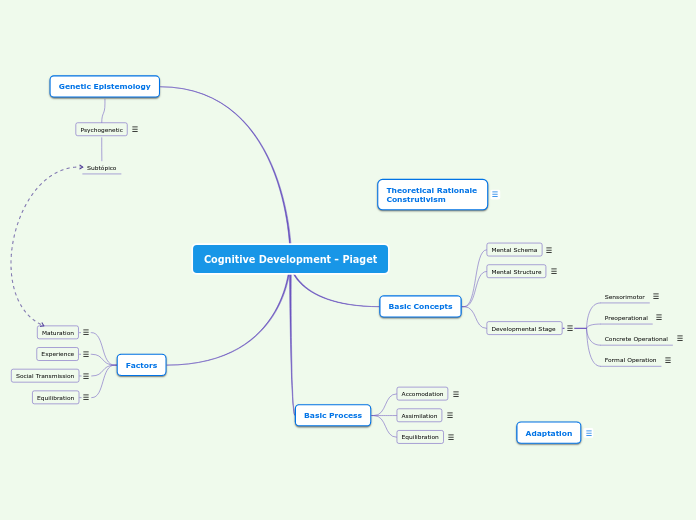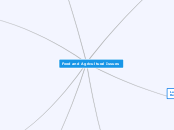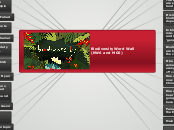The Arts of Living Things
Type in the name of your subject.
The mechanism that drives evolution is "Natural Selection"
EVOLUTION:
What is Evolution? - YouTube
Darwin's Finches:
The Theory of Evolution (by Natural Selection) | Cornerstones Education - YouTube
Add detailed notes about each lecture, so that when the time comes to prepare for exams, you will have an easier and quicker overview.
EVOLUTION
Types of evolution....
Coevolution
Convergent evolution
Divergent evolution
Adaptive radiation
What produces evolutionary changes
independently of natural selection?
Founder effect
Bottlenecks
Genetic drift
Types of natural selection...
Sexual selection
Stabilizing selection
Disruptive selection
Directional selection
Scientists came up with different beliefs...
Theories:
Theory of Evolution: How did Darwin come up with it? - BBC News - YouTube
Charles Darwin- traveled to "Galapagos Island" & found a remarkable population of plants, birds and reptiles!
Types of evidence:
-Biogeography
-Homologous & Analogous features
-Vestigial features
-Competition within populations
**Survival of the fittest**
Charles Lyell- "Theory of Uniformitarianism"
Georges Cuvier- "Theory of Catastrophism"
Chevalier de Lamarck- mechanisms of "Use & Disuse"/ "Inheritance of Acquired Characteristics"
Erasmus Darwin- believed organisms change over time.
Carl Linnaeus- classification system.
Buffon- observed anatomical features (with no purpose).
Aristotle- living things are "Immutable"
Mutations create new genetic information and add genetic diversity.
Mutations:
Mutations (Updated) - YouTube
Breeders can't create traits that do not already exist within the population.
Add a short description of your homework and any details you need in order to understand and complete the task.
Artificial selection is limited by genetic
variability within the breeding population.
Add a list of questions to help you recap your lecture.
Mutations occur by:
-Substitution
-Insertion
-Deletion
Write down if there are things you would like to discuss or clarify with your teacher or colleagues in relation to this topic.
Genetic diversity must be present for nature to
favor some individuals over others.
Add a short description of the lecture.
Nutrients are the chemicals that an organism needs in order to grow, build an and repair tissues and to produce energy.
Schedule your course ahead. Knowing all the information will make everything easier.
SYSTEMS
Circulatory system
Circulatory System:
Circulatory System and Pathway of Blood Through the Heart - YouTube
Pathway of Blood:
- superior vena cava or inferior vena cava
- right atrium
- tricuspid valve
- right ventricle
- pulmonary valve- (semilunar valve)
- pulmonary artery (goes to lungs)
- pulmonary vein
- left atrium
- bicuspid valve (left AV valve)
- left ventricle
- aortic valve (semilunar valve)
- aorta
Blood pressure:
Diastolic Pressure (heart relaxes)
Systolic Pressure (heart contracts)
Types of blood vessels:
Capillaries:
-connect arteries/arterioles to vein/venules
-provides oxygen & nutrients to the cell
**The smallest vessel**
Veins:
-carries blood towards the heart
- usually deoxygenated
**Exception pulmonary vein**
Arteries:
-carries blood away from the heart
-usually oxygenated
**Exception pulmonary artery**
-Vasodilation
-Vasoconstriction
Composition of blood:
Platelets:
-control blood clotting process
White blood cells:
-Attack bacteria & other invaders
Red blood cells:
-carry oxygen
-contain hemoglobin
Blood plasma:
-antibodies/proteins
-nutrients/wastes
Main function:
Carries wastes from cells
Transports essential nutrients to the cells
Transports carbon dioxide from cells to the lung
Transports oxygen to the cells from the lung
Respiratory System
Respiratory System:
Respiratory System - YouTube
Structure of the lungs:
A breathing system for bringing-rich air to the respiratory membrane
**Mechanism of ventilation**
----> Exhalation & Inhalation
Vital capacity
Residual volume
Expiratory reserve volume
Inspiratory reserve volume
Total lung capacity
Tidal volume
A good supply of blood
A large surface area for gas exchange
**Gas exchange happens in the alveoli**
Thin permeable respiratory membrane through which diffusion can occur
**Pneumothorax causes the lungs to collapse**
----->Difficulty breathing
Digestion in the body
Digestive system:
Digestive System - YouTube
Ingestion takes you to:
Egestion:
-Anus is where the stool is released
Absorption:
-Small intestine is where most digestion happens (villi found)
-Large intestine is where the undigested particles are found
Digestion:
-Physical and chemical (amylase)
-Bolus forms and goes down the esophagus (peristalsis)
-Stomach churns and mixes food particles with gastric juice(mucus found in gastric juice for protection)
-Liver produces bile, but gallbladder stores it (pancreas releases hormones and enzymes that'll help the breakdown of proteins)
Nutrients:
The 6 Nutrients:
How The Six Basic Nutrients Affect Your Body - YouTube
Add the class information for each week.
Minerals
Critical in the formation of bone
Build & repair tissues
Vitamins
Water or fat soluble
Regulates cell function, growth & development within our bodies
Water
Need to digest food/ get rid of waste products/ chemical reactions
The body is made of 55% to 60%
Lipids
Help in the absorption of vitamins
Concentrated source of energy
Proteins
Composed of many amino acids
Building blocks of body
Carbohydrates
Monosaccharides, Disaccharides, Polysaccharides
Main source of energy
Metabolic rate depends on:
Add class name.
-Body size
-Sex
-Physical Activity
-Age
-Hereditary factors
Add additional information about this class.
"Cells" divide for growth, development, repair and the formation of gametes.
GENETICS:
DNA, Chromosomes, Genes, and Traits: An Intro to Heredity - YouTube
Add key information about the books you've read. If you feel it's necessary, you can add a small summary of your readings in the Notes section.
GENETICS
DNA molecule:
-Double helix
-Twisted ladder
-Thymine(T) & Adenine(A) are complementary bases.
-Guanine(G) & Cytosine(C) are complementary bases.
Pedigree charts are used to study the transmission of a hereditary condition.
-Affected female (colored circle)
-Affected male (colored square)
Sex linkage is the passing of traits found on the X chromosome.
**Y chromosome carries no information**
Hemophilia is a recessive X-linked trait.
Type O blood is the universal donor.
Type AB blood is the universal recipient
Incomplete dominance is a blending of traits.
Codominance occurs when both alleles are fully expressed.
Dihybrid crosses are crosses between individuals who differ in two pairs of alleles (usually 9:3:3:1)
A monohybrid punnet square codes for one trait.
Dominant alleles may prevent the expression of recessive alleles.
-Homozygous dominant: TT
-Homozygous recessive: tt
-Heterozygous: Tt
-Female-sex chromosomes are homologous (XX)
-Male-sex chromosomes are non-homologous (XY)
Karyotypes are used to view abnormalities (stain, viewed & photographs under a microscope)
Abnormalities could either be monosomy or trisomy non-disjunction.
In meiosis- produce four genetically different, haploid(n) reproductive cells.
Meiosis:
Meiosis (Updated) - YouTube
Two cell divisions; eight steps; reduce # of chromosomes by half; in testes-spermatogenesis/ in ovaries-oogenesis
Anaphase I, sister chromatids do NOT separate.
Metaphase I, homologous pairs line up at the metaphase plate.
Meiosis I, involves synapsis, crossing over, formation of tetrads
Asexual reproduction=identical offspring from single parent (mitosis)
Sexual reproduction=genetically variable offspring (meiosis)
Mitosis has 3 phases:
1)Interphase
2)Mitosis
3)Cytokinesis
Cloning is the process of forming identical offspring from a single cell or tissue.
Add details about where you can get it from. For e.g.: library, bookstore, audiobook, etc.
Asexual reproduction: binary fission, budding, fragmentation
Add the publishing information.
Mitosis: Interphase, Prophase, Metaphase, Anaphase, Telophase, Cytokinesis
Mitosis:
Mitosis: The Amazing Cell Process that Uses Division to Multiply! (Updated) - YouTube
Genetic information is stored in DNA molecules within the chromosome cells.
-Somatic cells are any cell in the body except sperm &
egg cells.
- 46 chromosomes -----> 2 sets of 23 chromosomes (diploid)
Add summary of the content of a book
-Sex cells are the egg & sperm cells.
-23 chromosomes -----> 1 set of 23 chromosomes (haploid)
Name the author.
The biological species concept defines
"species" as a population of individuals
that are able to freely breed under
natural conditions.
BIODIVERSITY:
Biodiversity 101 - YouTube
Type in all the info you would like to know about this subject. If there is something you don't know yet, no problem! You can fill in the blanks along the way.
BIODIVERSITY
Animals could be vertebrates or invertebrates.
Animal adaptations:
Animal Adaptations for Kids, Learn about physical, life cycle, and behavioral adaptations of animals - YouTube
Most animals are protostomes.
-Radial (jellyfish, starfish)
-Bilateral (human)
Plants evolved from green algae (charophytes),
multicellular, eukaryotic, photosynthetic, most terrestrial, cell wall made of cellulose etc.
Adaptation of plants:
Plant Structure and Adaptations - YouTube
4 main groups:
-Bryophytes
-Pteridophytes
-Gymnosperms
-Angiosperms
Fungi have cell walls made of chitin, majority multicellular (yeast-unicellular), bodies are mesh-like (composed of mycelium), not photosynthetic.
What are fungus?
Fungus | Microorganism | Introduction to Fungus | What are Fungi | Biological Classification- Fungi - YouTube
-Major decomposers
-Plants rely on fungi for nutrients
-Responsible for cycling through biosphere
Asexual repro. by dispersing spores
Protists are the most diverse group!
What are protists?
Kingdom of Protista - YouTube
Were the first eukaryotes (endosymbiotic/ folding/ mitochondria & chroloplast).
Can be:
Animal-like (amoeba)
Plant-like (algae)
Fungus-like (slime moulds)
Binary-fission (asexual)
Conjugation (sexual)
Viruses are non-living
What are viruses?
Viruses (Updated) - YouTube
Two ways for a virus to reproduce: lytic cycle & lysogenic cycle.
Eubacteria & Archae are difficult to distinguish because of small size and lack of internal structure.
Similarities & Differences between Bacteria and Archae:
Difference between Bacteria and Archaea - YouTube
Did your teacher present the objectives of this course? Write them down and add anything else that might help you reach these objectives.
Prokaryotes:
a single-celled organism that does not contain membrane bound organelles.
Add details about your teachers' evaluation criteria. This way you will know the aspects you need to focus on.
They can be identified by cell shape, cell wall and movement.
-Bacteria have cilia, flagellum to help them move.
-Gram negative (purple)
-Gram positive (pink)
Reproduce asexually by Binary Fission
Reproduce sexually by Conjugation
Eukaryotes:
any organism whose cells contain organelles; multicellular.
Write down the attendance policy, to avoid confusion throughout the year.
Binomial Nomenclature:
*Two name system (genus-species)*
Type in the name of your teachers and teacher assistants, plus any details you should know about them.
Traditional Taxonomic ranks:
-Domain
-Kingdom
-Phylum
-Class
-Order
-Family
-Genus
-Species
All living things are descended
from a common ancestor.
6 Kingdoms of Life:
Eubacteria/Archae/Protists/
Fungi/Plants/Animals
Ways to consider biodiversity:
-Genetic diversity
-Species
-Structural diversity
Add details about your course.
Ways to classify species:
-Morphology
-Behaviour
-Geographic location
Loss of biodiversity means:
-threatened food supply
-eliminates sources of natural medecine
-economic impact on tourism & forestry-cause disruption in biogeochemical cycles.









